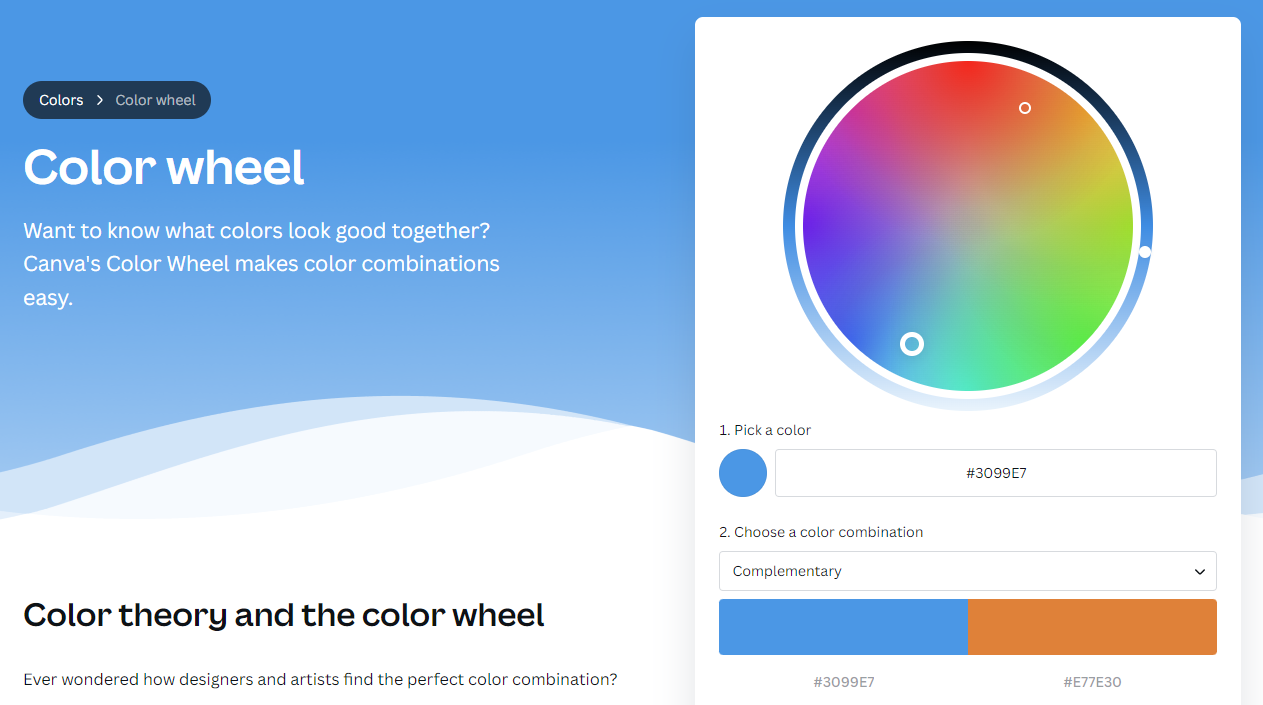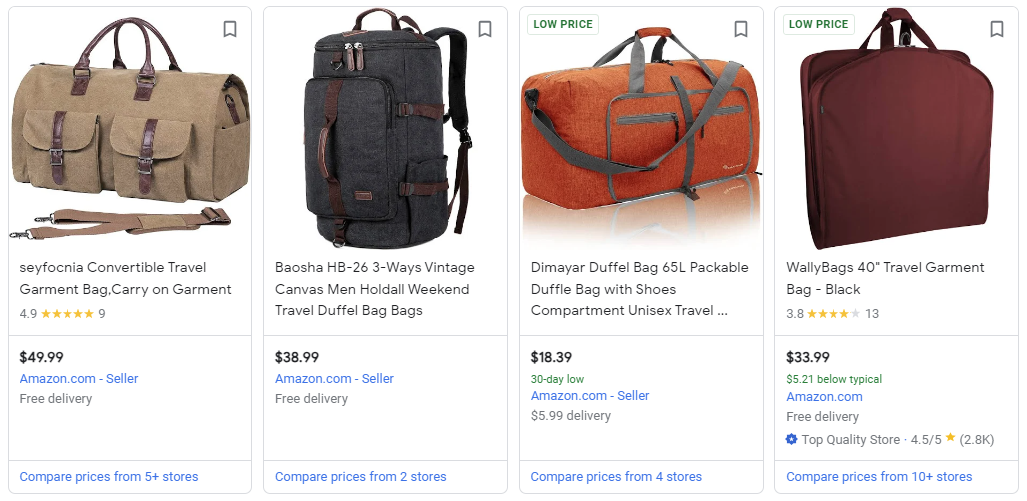The design of your ecommerce website is crucial as it directly impacts user experience, brand perception, and sales. A well-designed site ensures ease of navigation, fosters trust, and facilitates the purchasing process. It plays an instrumental role in your sales and, in some cases, it can determine the success of your business.
The ecommerce landscape is constantly evolving, but one thing remains unchanged – an ecommerce website design can have a profound impact on sales.
Your potential customer’s first interaction with your brand is through your ecommerce website, and you only get one chance to make a good impression. If your website design is confusing, outdated, or visually unappealing, visitors are more likely to bounce without making a purchase.
However, with the right ecommerce website design tips at your disposal, you can ensure your site is user-friendly, visually appealing, and optimized to convert.
Overview
The Importance of Web Design for Ecommerce Sites
Ecommerce website design forms the core of any online retail business. It is the digital storefront that greets your customers and is a key determinant of whether they continue their journey with your brand or move on to your competitors.
A well-designed ecommerce website ensures that your brand and products are showcased in an engaging, accessible manner, which directly influences purchasing decisions and impacts your bottom line.
The importance of web design lies not only in aesthetic considerations but also in functionality and user experience. From navigation and product presentation to the checkout process, every element should be designed with the user in mind, making it easy for them to find what they’re looking for, understand your products, and make a purchase effortlessly.
Ecommerce Website Design Tips
Effective ecommerce website design goes beyond aesthetics – it’s about creating an enjoyable user experience that makes shopping on your site easy and intuitive. Your website is your virtual storefront. It should be inviting, easy to navigate, and reinforce trust in your brand.
Creating an effective ecommerce website design takes time and effort, which is why a lot of business owners opt to hire a professional web designer. However, if you have the time and skill set to customize designs provided by ecommerce platforms, it’s well worth the investment to make sure your design has everything needed to ensure your website is optimized to sell your products.
Here are 12 ecommerce website design tips that will not only boost your brand’s visual appeal but also enhance user experience and drive conversions.
1. Keep it Simple
Simplicity is the cornerstone of a successful ecommerce website design and good website design in general. You don’t want to bombard your visitors with too much information or distract them with unnecessary elements.
Each page on your site should have a clear purpose and guide your customers toward making a purchase. For example, eliminate unnecessary clutter on product pages—keep the focus on the product images and the “add to cart” button. Limit your use of colors, fonts, and images to maintain a clean, coherent, and professional look.
2. Let Your Branding Pop
Your ecommerce website is an extension of your brand, and therefore, it’s important to let your branding shine through the design. This includes using your brand’s colors, fonts, and logo consistently throughout the site. You should also ensure your brand’s voice and tone are consistent in all of your site’s written content.
When customers visit your site, they should instantly recognize your brand. For instance, a company known for its playful and quirky products might use bold colors and fun language on its site.
Your branding plays an important role in the overall user experience of interacting with your company and provides the foundation on which you can increase brand awareness with your digital marketing.
3. Think Like a Visitor
When designing your ecommerce website, it’s crucial to put yourself in the shoes of your visitors.
What would they want to see?
What would make their shopping experience easier?
Consider features like easily accessible search bars, intuitive navigation menus, and clearly labeled product categories. Make sure your contact information is easy to find. Remember, a frustrated visitor is unlikely to become a customer, so prioritize user-friendliness in your design.
4. Use Color Strategically
Color has a significant impact on people’s emotions and behaviors. Therefore, it’s important to understand color psychology when designing your ecommerce website. Use complimentary colors to highlight calls-to-action, like “add to cart” or “buy now” buttons.
Opt for a color scheme that aligns with your branding and appeals to your target audience. For example, if you sell luxury products, you might choose a black and gold color scheme to convey elegance and sophistication.
You can find the perfect color combinations using Canva’s color wheel, which identifies great color combinations based on your brand’s main color.
5. Use High-quality Images
Visuals play a critical role in online shopping. Since customers cannot physically touch or see products, high-quality images are their only visual reference. Make sure your website features high-resolution, professional photos.
Include multiple images showing different angles and close-ups of each product. If possible, also include images of the product being used to help customers visualize it better.
Tip from our SEO team: If you’re planning on adding your products to Google Shopping, you will need simple images that feature the product alone against a white background.
6. Make It Easy to Scan Your Content
Internet users typically scan content rather than reading it word-for-word. So, make sure your content is easy to scan by using headers, subheaders, bullet points, and short paragraphs.
Highlight key information like product features, prices, and benefits to ensure they stand out. Remember, if visitors can’t find the information they’re looking for quickly, they may leave your site.
7. Look Professional
A professional-looking website instills trust in visitors.
This means clean design, easy navigation, high-quality images, and error-free copy. Make sure your branding is consistent across the site, and that your color scheme, fonts, and graphics align well.
Consider hiring a professional website designer or using a professional ecommerce website template to ensure your site looks polished and credible.
8. Use Social Proof
Social proof, like reviews and testimonials, can significantly influence purchasing decisions.
Display customer reviews on your product pages and consider adding a rating system. You could also showcase customer testimonials or display badges of any industry awards or recognitions your business has received.
For example, if you’ve been featured in a well-known magazine or have thousands of positive reviews, highlight this on your site.
9. Make Categories Easy to Navigate
Your ecommerce site should be easy to navigate. Make sure your product categories are clearly labeled and logically organized. Consider using drop-down menus to make subcategories easy to find. For instance, an online clothing store might organize its products by type, size, color, and brand.
10. Hire a Professional Designer
While these tips can significantly improve your ecommerce website design, you might still find it challenging to implement them all on your own.
This is where hiring an ecommerce website designer can prove invaluable. An experienced designer can help you create an attractive, user-friendly, and SEO-optimized website that aligns with your brand identity and caters to your target audience.
They can provide expert guidance, take care of technical aspects, and ensure your website design supports your business goals. Not sure how to find the right designer for your website? Here are 10 tips for choosing a web design company.
Ecommerce Website Design FAQs
We’ve worked with a lot of business owners interested in improving their ecommerce website design, and have discovered a few questions pop up frequently. Here are some of the most frequently asked questions and our answers regarding ecommerce website design.
How can I improve my ecommerce website design?
Improving your ecommerce website design involves enhancing user experience through a simplified, easy-to-navigate layout, strategic color use, high-quality images, clear branding, and a streamlined checkout process.
What to consider when designing an ecommerce website?
Consider user-friendliness, simplicity, visual appeal, brand consistency, mobile responsiveness, SEO optimization, and a smooth checkout process when designing an ecommerce website.
What pages should an ecommerce website have?
An ecommerce website should have essential pages like the home page, product pages, about us, contact us, FAQs, privacy policy, terms and conditions, and a shopping cart/checkout page.
What three things are required for ecommerce?
Ecommerce requires a user-friendly website, secure and varied payment gateways, and an effective strategy for driving traffic, such as SEO or digital advertising.
Need Help with Your Ecommerce Website Design?
Is your ecommerce website failing to deliver the desired results? Sachs Marketing Group can help!
As a full-service digital marketing agency, we offer professional web design services and our talented design team can help you take your e-commerce website design to the next level. We take pride in crafting ecommerce websites that are not only visually stunning but also optimize the user experience to boost conversions.
Imagine your website transformed into an ecommerce powerhouse, driving substantial traffic, engaging visitors effectively, and converting them into loyal customers.
Contact us today to give your ecommerce website the edge it needs to thrive in today’s competitive market.
Conclusion
Mastering ecommerce website design can be the difference between a thriving online business and one that merely survives.
By implementing these ecommerce website design tips, you can enhance user experience, improve conversion rates, and set your business up for success. Whether you choose to DIY or hire a professional, the importance of well-thought-out design cannot be overstated.
Contact us today to get the conversation started!















